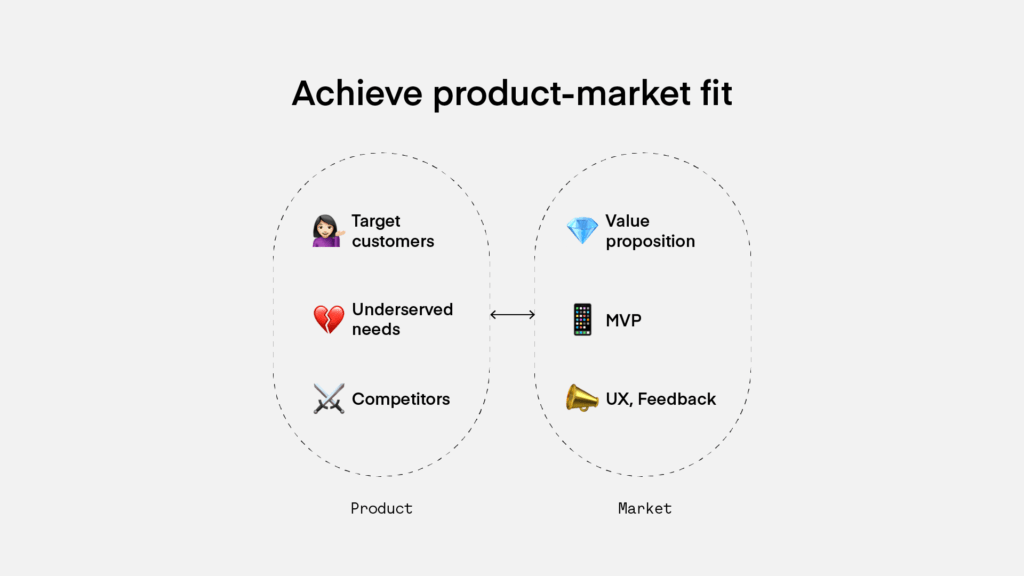All businesses, good or bad, start with an idea. For your company to succeed you need to build a product whose value proposition satisfies the needs of a market and its potential customers. But how do you know if there’s a demand for it in the market or not?
Over the years we’ve tested a number of ways to test product-market fit. Here are some proven tips for finding your product-market fit.
Defining a product-market fit
“Product-market fit means being in a good market with a product that can satisfy that market.”
That’s how Marc Andreessen, the lucrative venture capitalist who coined the term ‘product-market fit’ (PMF), defined it in his now-notorious blog post The only thing that matters.
In layman’s terms, when you identify a need in the market and build a solution that customers want to buy, that’s product-market fit.
7 steps to achieve PMF
Product-market fit doesn’t look the same for different businesses. Also, a PMF can be achieved in many different ways. If you already have a product, you can adapt it to new markets, repurpose or reorganize old ideas, go to where the market is, or even create an entirely new service.
In any case, we will always focus on 4 things: 1. customers, 2. competitors, 3. value proposition, 4. minimum viable product (MVP).
Dan Olsen, Lean Startup consultant and author of The Lean Product Playbook, offers a six steps process. We added a very important 7th step to his process.

- Identify your target customer
- Who do you think will buy your offering? How will it meet their needs?
- Find underserved customer needs
- You want to identify the specific needs that correspond to a good market opportunity. What’s the problem that you’re trying to solve? Or a booming industry with underserved communities?
- A good example is the CBD industry, which skyrocketed since marihuana has been legalized in a number of US states. At first most of the products were bought by early adopters and excited evangelists. Then, as the market became more saturated and the people more informed, the focus moved from recreational use to mental health, beauty products, sleeping aids, and now to products supporting sports and recreational activities.
- Analyze your competitors
- Sometimes entrepreneurs ignore competitor analysis because of pure faith in their product’s uniqueness. Keep in mind that even if you don’t think you have any direct competitors, your faith in the uniqueness of your product is not sufficient grounds for confidently bringing your product to market. Competitor analysis is important no matter what.
- Define your value proposition
- A clear value proposition will help you focus on the most important things about your business: your customers, their pain points, and the unique solution you’re delivering them.
- Specify your Minimum Viable Product (MVP) feature set.
- You don’t want to spend too much time and effort toiling away only to find out later that customers don’t like the product you’ve built. The MVP approach is aimed at building only what is needed to create enough value in the eyes of your target customer to validate that you are heading in the right direction.
- Create your MVP prototype
- A prototype is a representation of your product that you create without having to build your actual product.
- Define the user flow (what’s the ideal, most simple way that a person will use your product and achieve the results they want?), list all necessary features and prioritize them.
- Test your MVP with customers
- Build, test and learn! During user testing, you want to carefully observe what the customer says and does as they use the prototype.
Test your ideas early and often
What’s the one takeaway you can take out from this article? Test your ideas early and often. And don’t be afraid to move away from your original idea when you see a better opportunity. It can pay off, big time.
Do you have an idea for a product? Or a technology that can be productized? Don’t be shy, and send us a quick overview at hello@madebysoulmates.com. We’ll help you brainstorm new ways to bring your idea to the market.
















